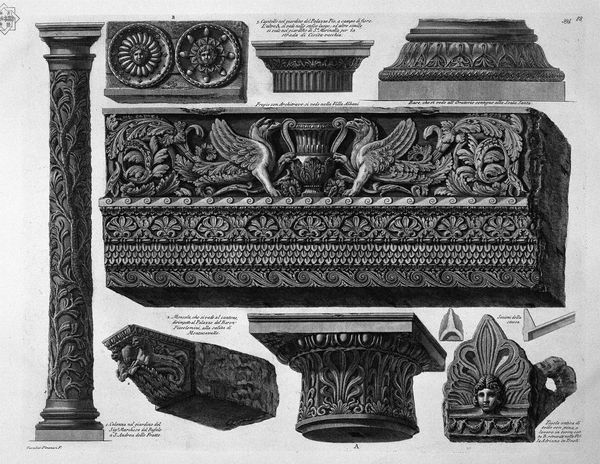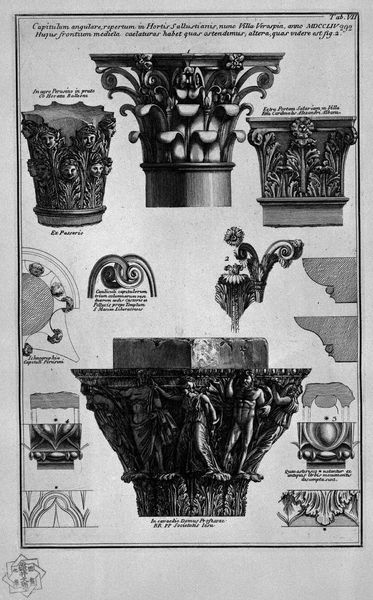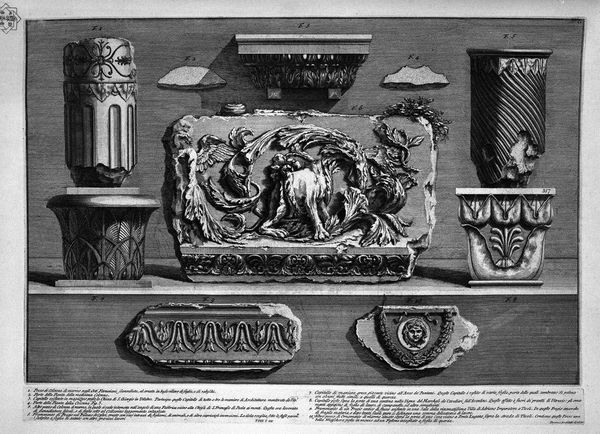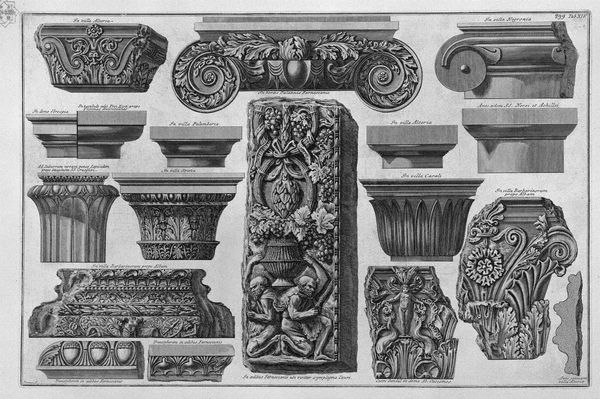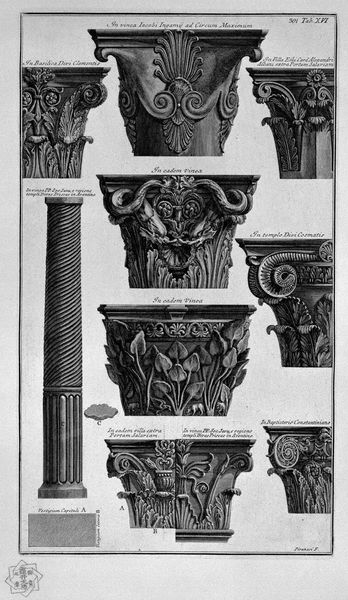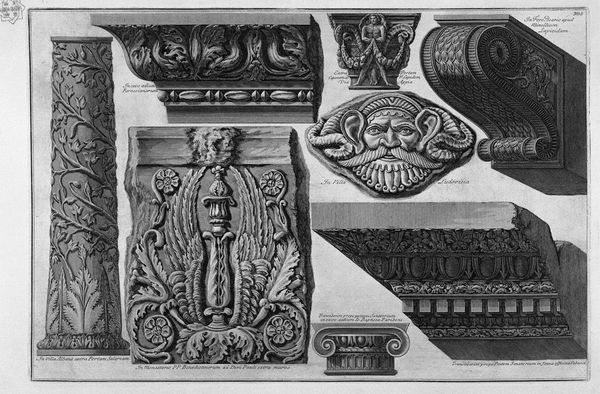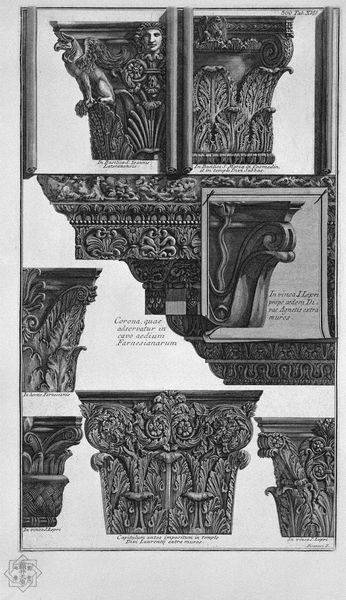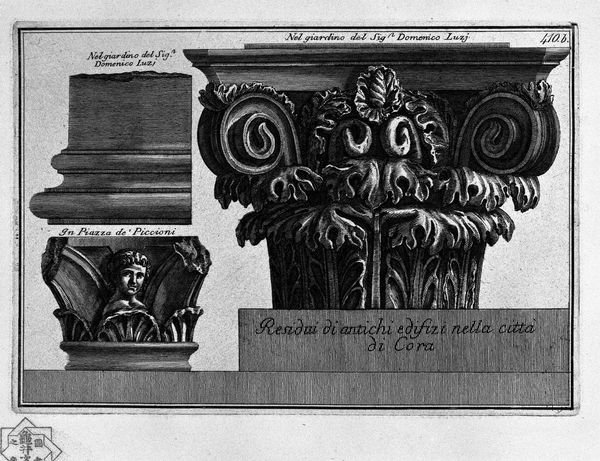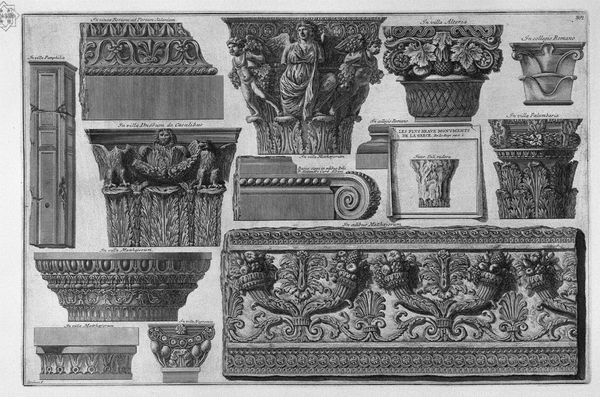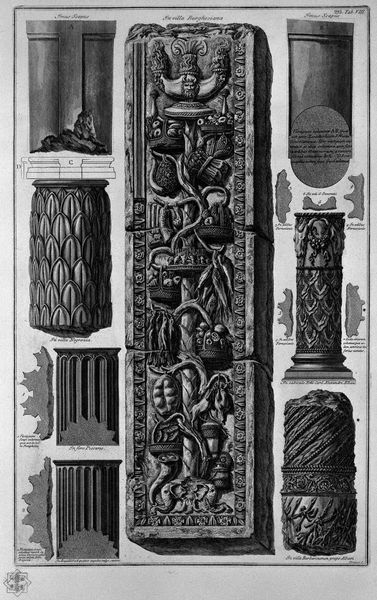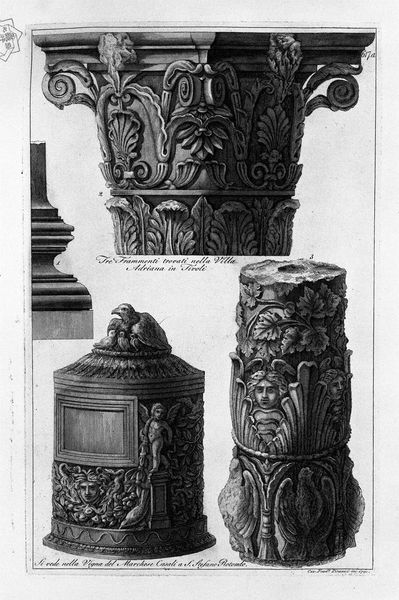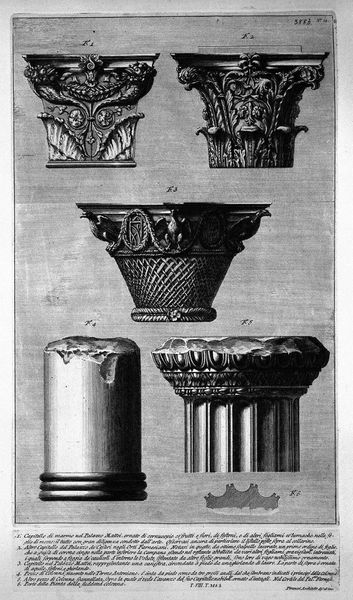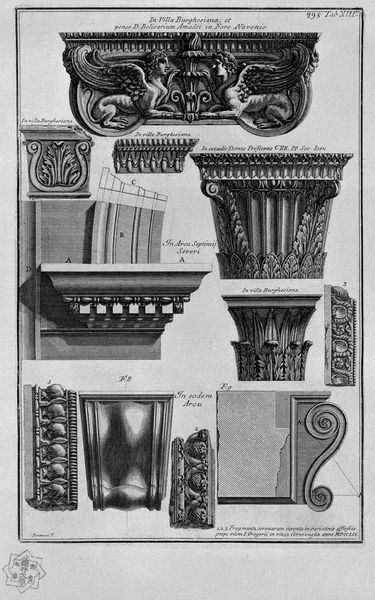
Fragment of an architrave and frieze, capitals of columns and pieces
0:00
0:00
drawing, print, etching, paper, ink, engraving
#
portrait
#
drawing
# print
#
etching
#
sculpture
#
greek-and-roman-art
#
charcoal drawing
#
figuration
#
paper
#
form
#
ink
#
geometric
#
ancient-mediterranean
#
column
#
arch
#
line
#
cityscape
#
engraving
Copyright: Public domain
This etching of architectural fragments was made by Giovanni Battista Piranesi, who lived in 18th century Italy, using paper and ink. Piranesi was fascinated with the material presence of ancient Rome. Notice how the artist meticulously documents the textures and patterns of the stonework. The intense detailing is born from Piranesi's skilled etching, which involves coating a metal plate with wax, drawing through it to expose the metal, and then bathing the plate in acid. The acid bites into the exposed lines, creating grooves that hold ink. The plate is then pressed onto paper, transferring the image. This printmaking process is incredibly labor-intensive. Every line, every shadow, every detail of the stone's surface had to be carefully etched by hand. The medium itself speaks to the amount of work, and this allows Piranesi to not only reproduce images of ancient artifacts but to create new aesthetic objects. Ultimately, by focusing on process, we see how Piranesi elevates the status of printmaking. He blurs the line between documentation and artistic creation, demonstrating that craft can be just as valuable as fine art.
Comments
No comments
Be the first to comment and join the conversation on the ultimate creative platform.
